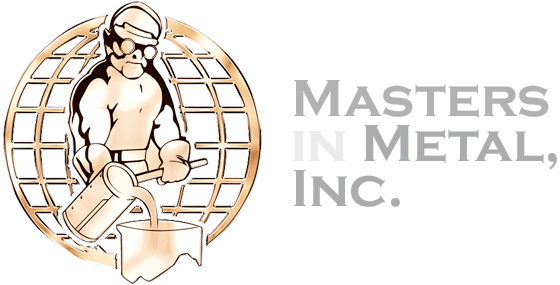 1
1Concept
When designing a cast part, costs can be reduced by maintaining consistent wall thickness, preferably greater than .060. Avoid excessive and/or unnecessary fillets or heavy sections.
 2
2Die Cutting
Once a feasible design has been drafted and a blueprint (preferably with an IGES file) is completed, an injection tool is cut from 6061 aluminum.
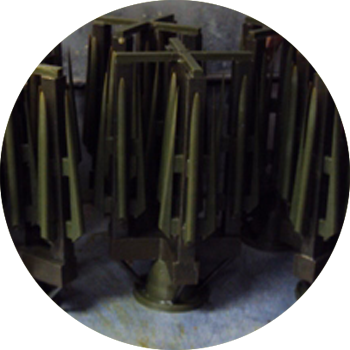 3
3Wax Injection
The die fabricated previously is injected with warm, paste wax – this fills the negative of the pattern. The positive wax pattern is removed once cooled and solidified. This is then cleaned by hand to remove parting lines and fill any voids with a light paste wax. Finally, the wax patterns are assembled in a manner proscribed for the best flow of molten steel and most appropriate to deal with heat transfer and loss. This assembly is known as a ‘tree’ or ‘set-up’.
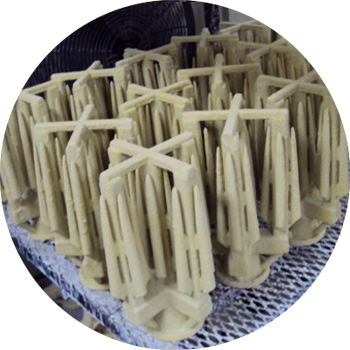 4
4Shell Construction
Several coats of silica sand are built around the wax set-up, being dipped over several days in fluidized sand beds and tanks of slurry. This process can be ethyl or colloidal; Masters in Metal employs the colloidal shell system.
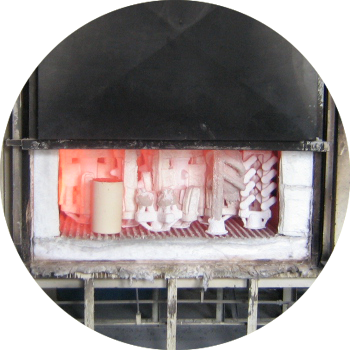 5
5De-Wax and Pre-Heat
Once dried and sealed, the wax set-ups (now encased in silica shells) are placed within an autodave, wherein hot steam melts the wax from the shell, leaving a negative pattern of the part to be cast. Next, the now-empty silica shell is heated to 1800 degrees Fahrenheit in ceramic lined kilns; the duration of this pre-heat process is generally about two hours, but is affected by the size and composition of the shell. This step is to prepare the shell to receive 3000 degree steel without suffering from thermal shock and potentially compromising structural integrity.
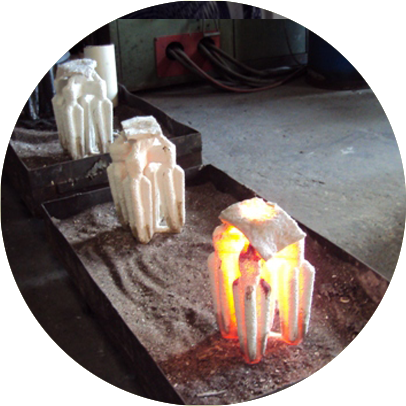 6
6Pour
While the shells are being preheated, raw steel alloy – typically ingot – is being melted via induction within ceramic pots known as crucibles. Molten steel, generally around 3000 degrees F, is then poured into the still-hot shell immediately after it has been removed from the pre-heat oven.
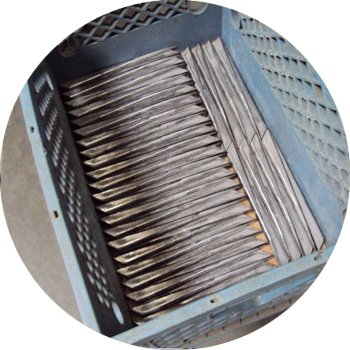 7
7Cast Clean Up
Once the alloy has cooled and become solid, the ceramic shell is removed, the superfluous metal gating assembly is cut from the individual castings, and the parts are ground to meet the net shape of the casting.
